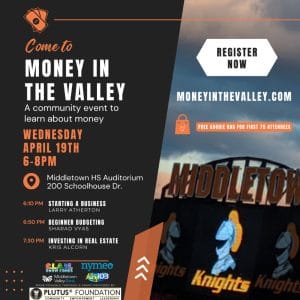A recent article by Forbes revealed 4 unbelievable statistics about adults in America:
- 44% of Americans don’t have enough cash to cover a $400 emergency.
- 43% of student loan borrowers are not making payments.
- 38% of U.S. households have credit card debt.
- 33% of American adults have $0 saved for retirement.
One reason statistics like these are becoming more common is the lack of financial education at every age level in America. Most schools don’t prioritize financial literacy, and resources are often hard to find. The good news is that there are individuals and organizations recognizing this trend and they’re determined to pitch in to educate and empower people to make smart financial decisions.
Start a financial literacy program with these resources.
Do you want to implement a financial literacy program in your community, but don’t know where to start? Check out these existing resources. They include free curriculum, facilitator guides, videos, downloads, games, activities, and more.
The Actuarial Foundation
The Actuarial Foundation has been around since 1994. They seek to help build “an educated public in pursuit of a secure financial future.” The foundation’s website offers several free resources to help teach financial literacy.
Some of their resources focus on the mathematical side of financing. Their main personal finance resource is called “Building Your Future”, a series of 4 books that are classroom-ready, complete with a teacher’s guide. The curriculum is geared toward students in 4th-12th grade.
Your Life, Your Money
PBS provides a great resource called “Your Life, Your Money.” Hosted by actor Donald Faison (Scrubs, Clueless), Your Life, Your Money is a series of videos on financial topics such as getting out of debt, saving, investing, and retirement.
There are also resources for educators and parents including a facilitator’s guide, video transcripts, a glossary of financial terms, and links to relevant national financial organizations. The videos are geared toward teens and young adults but can be used by anyone.
MyMoney.Gov
MyMoney.Gov is a product of the Federal Financial Literacy and Education Commission, a task force of the U.S. Department of the Treasury. The website features a resource page for teachers and educators, with links to several federal financial literacy sources. There are financial literacy resources for various age groups listed. Resources include curriculum, lesson plans, downloadable activities, online videos, slideshows, and more.
FDIC’s MoneySmart
Another great financial literacy resource comes from the Federal Deposit Insurance Corporation (FDIC). MoneySmart was designed to help people of all ages strengthen their financial skills. They provide learning resources as well as tools and strategies for teaching others about financial literacy.
One great feature of MoneySmart is the online training webinars they regularly hold. Webinars include their “Train-the-Trainer” program, MoneySmart for Older Adults, and MoneySmart for Small Business, and you must register in advance to participate in webinars. People who have reviewed the Guide to Presenting and seek additional training are good candidates for train-the-trainer workshops.
You can find more information and upcoming webinar dates here.
National Financial Educators Council (NFEC)
The NFEC has over 400 hours of financial literacy curriculum available to use. The curriculum is broken down into groups:
- Pre-kindergarten to 2nd grade
- 3rd to 5th grades
- 6th to 8th grades
- High school
- College
- Adult
While you can purchase curriculum packages, you can receive five free financial literacy presentations by joining their email list. The NFEC’s curriculum was designed by a team of teachers, personal finance experts, and financial professionals.
Financial Literacy: Next Steps
If you are interested in starting your own financial literacy program, review the resources above to see if any align with your values and vision. Even if you want to create your own financial literacy program from scratch, looking at what’s already available can help with brainstorming ideas as well as identifying or solidifying topics you want to cover.
Either way, there are plenty of great resources to help you make a difference in your community.










1 Comment
Young and Finance · November 6, 2020 at 10:52 am
Thank you for sharing the resources